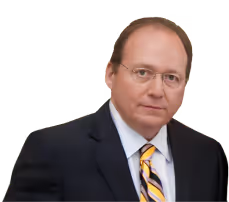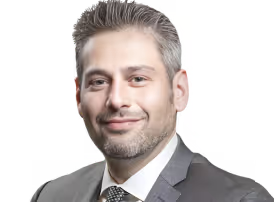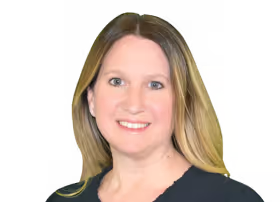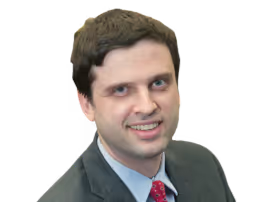Tesla’s Full Self-Driving Feature Questioned After Collision Sparks Fears About Nighttime Detection and Lane Recognition Capabilities
A recent crash involving Tesla’s latest model, the Cybertruck, has drawn widespread attention to the safety and reliability of the company’s Full Self-Driving (FSD) software. The vehicle struck a curb and crashed into a pole while operating in self-driving mode. Although Tesla markets this technology as capable of navigating complex roads, the incident reveals potential flaws in the software’s ability to handle changing traffic layouts, lane endings, and visibility limitations—especially at night.
This event comes just as Tesla moves toward launching a paid robotaxi service. The timing of the crash raises legal and public safety concerns, particularly for individuals and families relying on these systems to function correctly. When self-driving vehicles fail, the consequences can be immediate, dangerous, and life-altering.
What Happened in the Tesla Cybertruck Crash?
The crash occurred when a Tesla Cybertruck operating under its Full Self-Driving feature failed to merge out of a lane that was ending. Instead of adjusting its path, the vehicle continued forward, struck the curb, and collided with a pole. This took place in Reno, Nevada, and was documented in a police report stating the driver claimed unknown mechanical issues contributed to the crash.
Despite being marketed as autonomous, Tesla’s Full Self-Driving system still requires a human operator behind the wheel. However, incidents like this highlight the gap between expectation and reality. Drivers may believe the system is capable of handling all scenarios, but many conditions still exceed its current capabilities.
The crash occurred during nighttime conditions, where Tesla’s reliance on a camera-only system—as opposed to LiDAR or radar—may have contributed to poor detection of road changes or obstacles.
Limitations of Tesla’s Full Self-Driving Software
Tesla’s FSD system uses cameras and software to simulate human driving behavior. Unlike competitors that use multiple sensors, Tesla relies solely on visual input. This keeps manufacturing costs lower, but it also increases the risk of failure under certain conditions, such as:
- Poor lighting or nighttime driving
- Heavy rain, fog, or snow
- Unmarked construction zones
- Sudden lane changes or lane merges
Research and past incidents show that these are areas where Tesla’s self-driving system struggles. Lane recognition, in particular, remains a frequent issue when the road markings are faded or when the layout changes quickly without clear signage.
Experts in autonomous vehicle safety have pointed out that systems not using redundant sensor technology face greater risks of misjudging their environment, which can lead to collisions with curbs, barriers, and even pedestrians or other vehicles.
Growing Legal Questions Surrounding Autonomous Vehicles
As autonomous vehicle technology advances, so do the legal questions around who is liable when things go wrong. When a crash occurs involving Full Self-Driving technology, it’s not always clear who is at fault:
- Is the driver responsible for not taking over control?
- Is the manufacturer liable for the failure of the software?
- Did improper maintenance or a hardware malfunction contribute to the incident?
These questions often lead to legal claims involving product liability, negligence, and even class-action lawsuits if multiple users experience the same failure. In the case of the Cybertruck, if a pattern of lane navigation failures becomes evident, injured parties may have grounds for compensation.
Autonomous vehicle lawsuits are also challenging because they often involve software code, telemetry data, and crash reconstruction—all of which require legal teams to work with engineers, safety analysts, and accident reconstruction specialists to build a strong case.
Impact on Tesla’s Future and Robotaxi Plans
Tesla’s long-term business model relies heavily on automation. The planned launch of a paid robotaxi service represents a shift toward driverless commercial transportation. However, accidents involving Full Self-Driving features may undermine public trust and increase regulatory scrutiny.
In this recent incident, concerns were raised not only by safety advocates but also by autonomous vehicle researchers who believe the crash highlights the technology’s lack of adaptability. Sudden lane endings and road layout changes remain particularly difficult for current AI systems to manage, especially those that rely only on camera-based perception.
The timing could not be worse. The company had just announced it would begin testing ride-hailing operations in states with limited regulation over autonomous vehicles. If the system is not yet able to navigate complex urban environments safely, the public rollout of commercial robotaxis could result in further incidents and litigation.
Injuries, Damages, and Liability Claims
Although no fatalities were reported in this incident, the potential for serious injury exists anytime a heavy vehicle like a Cybertruck leaves the roadway. In other crashes involving self-driving systems, injuries have included:
- Whiplash and spinal trauma
- Broken bones
- Traumatic brain injuries
- Burns or crush injuries from airbag deployment or collision impact
Victims of such crashes may face long-term consequences, including costly rehabilitation, lost income, and psychological trauma. When a vehicle’s software is a contributing factor, victims may be eligible to seek compensation from the manufacturer in addition to other liable parties.
Product liability claims related to autonomous vehicles often center around three key issues:
- Defective software or failure to warn users about system limitations
- Inadequate instructions or training for drivers on how to use FSD
- Negligent design that omits important safety redundancies
In any case, victims and their families should understand their legal rights and act promptly to preserve evidence.
FAQs – Tesla Cybertruck Crash and Full Self-Driving Lawsuits
- What caused the Tesla Cybertruck crash? The vehicle failed to properly merge out of a lane that was ending and struck a curb before hitting a pole. It was reportedly in Full Self-Driving mode at the time of the crash, though the driver was behind the wheel.
- Does Tesla’s Full Self-Driving system make the vehicle fully autonomous? No. The Full Self-Driving system is still considered a driver-assist feature and requires a person to remain alert and ready to take control. It is not legally classified as a fully autonomous system.
- Can someone sue Tesla if they were injured while using Full Self-Driving? Yes. If the software or hardware fails and causes a crash, injured parties may file a product liability or negligence lawsuit against the manufacturer, depending on the facts of the case.
- What types of compensation can be pursued in these cases? Victims may seek damages for medical costs, lost wages, vehicle repairs, pain and suffering, and future medical care. In cases involving severe injury or death, wrongful death claims may also be possible.
- Is Tesla liable even if the driver was supposed to be in control? Possibly. Liability depends on whether the system malfunctioned or failed to perform as marketed. If the company failed to adequately warn users of risks or oversold the capabilities of the technology, they may still be held accountable.
- How do I prove the crash was caused by the FSD system? Data from the vehicle, including camera recordings and system logs, can provide evidence. It’s important to act quickly to preserve this data before it’s overwritten or lost.
- Are there time limits for filing a lawsuit? Yes. Each state has its own statute of limitations for personal injury and product liability claims. Consulting with a qualified attorney promptly can help ensure deadlines are met.
Contact Parker Waichman LLP For A Free Case Review
If you or someone close to you was hurt in a crash where an advanced driver-assistance feature was active, Parker Waichman LLP can help. Our national team investigates claims involving supervised automation, secures vehicle and software evidence, and pursues full compensation for injured people and families.
Call 1-800-YOUR-LAWYER (1-800-968-7529) now. Our national product liability lawyers will review what happened, preserve critical evidence, and outline a strategy tailored to your case. Regardless of your location or where your injury occurred, our nationwide product injury law firm is ready to assist you.


































